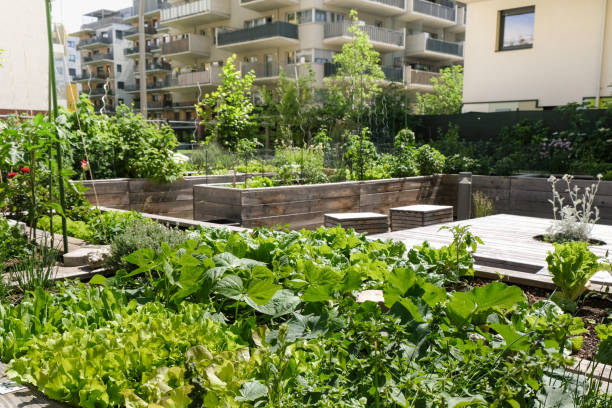Sustainable landscaping ideas for compact outdoor spaces
Compact outdoor spaces can be transformed into resilient, ecologically friendly landscapes with careful design and modest investment. This article outlines practical sustainability strategies — from vertical gardening and compact composting to native plant selection and efficient irrigation — that improve soil health, air quality, and biodiversity while fitting patios, decks, and balconies.

How can sustainability shape compact landscapes?
Sustainability in small yards starts with planning that reduces waste, conserves water, and prioritizes long-term soil health. Think of your patio, deck, or balcony as a micro-ecosystem: choose durable materials for decking and storage, reuse salvaged wood in DIY projects, and limit hardscaping to increase planting area. Using low-impact renovation practices and minimal chemical inputs reduces runoff and benefits air quality and local pollinators. Small, incremental changes — like swapping turf for containers and adding compost — compound to create a more resilient outdoor space.
What vertical gardening systems suit patios and decks?
Vertical gardening is ideal for tight footprints: living walls, trellises, stacked planters, and hanging pots maximize planting area without sacrificing circulation. Select lightweight substrates and modular systems that can be moved or reconfigured during renovations. Incorporate indoor plants on sheltered balconies to boost air quality and choose climbing native plants for easier maintenance and better habitat value. Vertical solutions also provide storage opportunities when combined with shelves and pockets, making them functional as well as green.
How to start composting in limited outdoor spaces?
Composting in compact areas is practical with small-scale systems: bokashi bins, vermicomposters, and tumbler composters fit patios or even indoor storage with proper odor control. Composting reduces waste and creates nutrient-rich soil amendments that improve soil health and reduce the need for synthetic fertilizers. Start with a balanced mix of greens and browns, monitor moisture, and harvest finished compost for container fills and mulch. Local services may offer yard-waste pickup or community compost drop-offs if on-site composting isn’t feasible.
Why choose native plants for biodiversity and air quality?
Native plants are well-adapted to local climates and typically require less irrigation and maintenance than exotics, supporting soil health and reducing long-term inputs. They also provide pollen and nectar resources for pollinators, improving urban biodiversity. For compact designs, choose dwarf or slow-growing varieties and mix perennials with seasonal annuals to maintain visual interest. Native shrubs and grasses can be used as living screens on decks and patios, improving privacy while filtering air and supporting beneficial insects.
How to balance irrigation, mulching, and soil health?
Efficient irrigation conserves water and supports strong roots: use drip lines, soaker hoses, or self-watering containers to target the root zone and avoid overwatering. Mulching with organic material reduces evaporation, moderates soil temperature, and slowly contributes to soil health as it decomposes. Pair irrigation with soil testing and amend soils with compost to improve structure and nutrient retention. Group plants with similar water needs together to simplify irrigation schedules and reduce waste.
How to support pollinators while managing pest control?
Encouraging pollinators involves planting a diversity of blossom timings and including host plants for larvae. Avoid broad-spectrum pesticides; instead use integrated pest control strategies such as handpicking, trap cropping, and encouraging predator insects through habitat features. Even in small spaces, adding a shallow water feature, a patch of bare soil, or nesting materials helps native bees and other pollinators. If professional help is needed, seek local services that emphasize ecological pest control and pollinator-friendly methods.
Conclusion
Sustainable landscaping for compact outdoor spaces is about thoughtful choices that increase biodiversity, improve soil health, and conserve resources while enhancing usability. By combining vertical gardening, small-scale composting, native plant selection, efficient irrigation, mulching, and pollinator-friendly practices, patios and balconies can become productive, low-maintenance green spaces. Incremental DIY projects and smart material choices during renovation make sustainability achievable even in the smallest areas.





